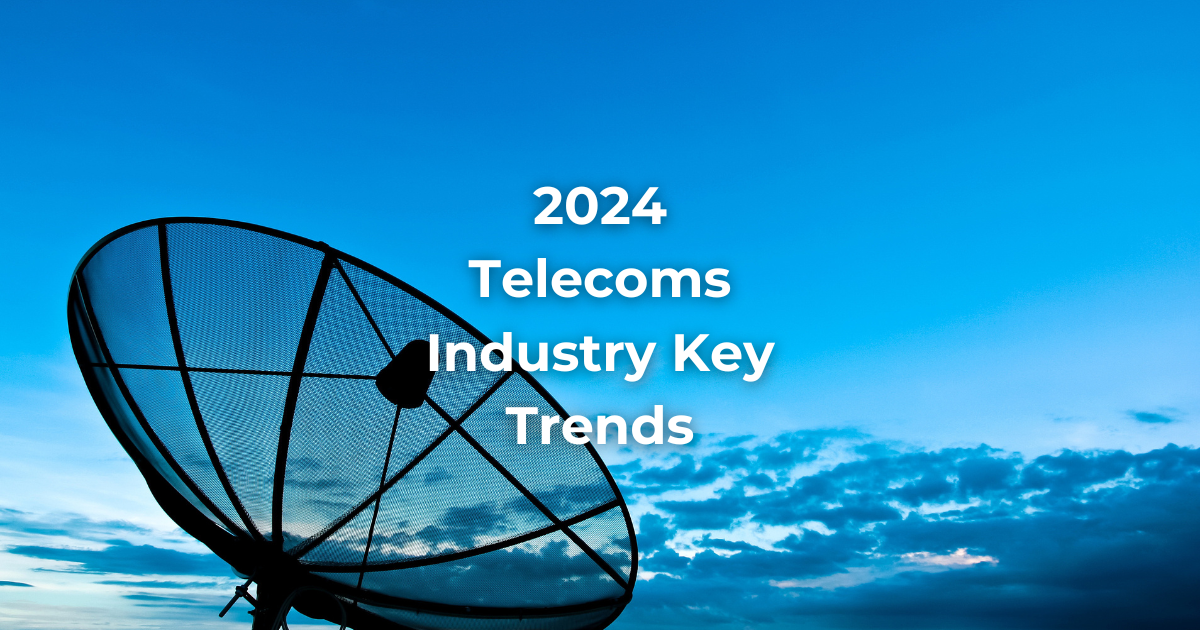The Internet of Things
In 2024, the Internet of Things (IoT) emerges as a pivotal trend in telecom, driven by advancements in connectivity. Telecom companies leverage IoT to enable smarter, interconnected devices across various sectors, enhancing efficiency and data management. This evolution signifies a transformative phase for both industries and consumers, emphasizing the critical role of robust, reliable networks in realizing the full potential of IoT applications.
Connectivity Technologies
The significant role of connectivity technologies has been highlighted in recent times, especially with the expansion of 5G networks. These advancements not only promise faster internet speeds but also lower latency, paving the way for more efficient and reliable communications. Such technologies are crucial for supporting the growing demands of both individual users and large-scale IoT applications, highlighting a transformative period in digital connectivity.
5G Network & Technology
The telecom industry’s adoption of 5G network and technology marked a leap towards ultra-fast internet speeds and significantly lower latency. This evolution is pivotal for enabling advanced applications such as autonomous driving, augmented reality, and enhanced IoT connectivity, laying the groundwork for a future of seamless, real-time communication and data exchange.
Artificial Intelligence
Artificial Intelligence (AI) in the telecom industry is revolutionizing operations and customer experiences, from predictive maintenance of networks to personalizing customer services. AI’s integration facilitates the handling of vast data volumes efficiently, improving service delivery and network reliability. This technology trend is central to the telecom sector’s innovation strategy, driving forward advancements in smart automation and decision-making processes.
High Resolution Content
The advent of 5G technology in the telecom industry has enabled the seamless streaming and sharing of high-resolution content. This breakthrough significantly enhances user experiences by facilitating ultra-high-definition video calls, gaming, and virtual reality applications, demanding high bandwidth and low latency. Such capabilities are transforming content consumption and creation, promising a new era of digital interaction and media richness.
Telecom Cybersecurity
As telecom networks evolve with the introduction of 5G and IoT, cybersecurity becomes paramount. The industry is focusing on advanced security measures to protect against increasing cyber threats targeting network infrastructure and data. This proactive stance involves leveraging AI and machine learning for real-time threat detection and response, ensuring the integrity and reliability of telecom services in the face of sophisticated cyber attacks.
Cloud Computing
Cloud computing in the telecom industry is facilitating a shift towards more flexible, scalable, and cost-efficient network management and service delivery. By leveraging cloud technologies, telecom operators are enhancing their capacity to support increasing data volumes and deliver innovative services. This trend also enables the integration of advanced technologies like AI and IoT, further transforming telecom infrastructure and operational models.
Communication Models
The evolution of communication models in the telecom industry, propelled by emerging technologies like 5G, is enabling more efficient, flexible, and secure ways of transmitting data. This transformation enhances connectivity options, supports the massive deployment of IoT devices, and allows for the seamless integration of various communication services, paving the way for innovative applications and improved user experiences.
Software Defined Networks (SDN’s)
Software Defined Networks (SDNs) are reshaping the telecom industry by introducing more adaptable and efficient network management and operations. This innovation allows for dynamic resource allocation and network configuration, reducing operational costs and enhancing service agility. SDNs support the telecom sector’s growing demands for flexibility in handling diverse data traffic patterns and service requirements.
Edge Computing
Edge computing is transforming the telecom industry by decentralizing data processing, bringing it closer to the source of data generation. This shift significantly reduces latency and bandwidth use, improving response times and efficiency for IoT devices and mobile applications. By leveraging edge computing, telecom operators can offer more reliable and faster services, enhancing user experience in an increasingly connected world.
For more detailed insights, visit the original source here: StartUs Insights.


